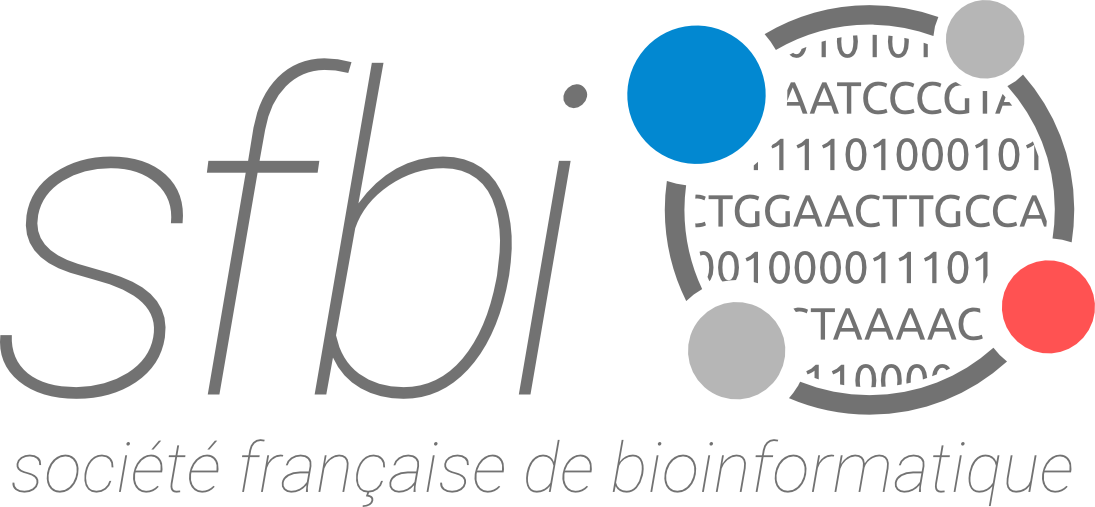6 months internship - Multi-omics molecular signature of childhood trauma in mood disorder patients.
Stage · Stage M2 · 6 mois Bac+5 / Master Inserm-Neurodiderot U1141 · Paris (France)
Date de prise de poste : 3 janvier 2022
Mots-Clés
Multiomics integration systems biology bipolar disorder gene networks
Description
I. Introduction :
In the 5th Edition of the Diagnostic and Statistical Manual of Mental Disorders (DSM-V), mood disorders (MD) or mood affective disorder are described as a subset of mental diseases characterized by a worsening of the patient's emotional state. Bipolar Disorder (BD) and Major Depressive Disorder (MDD) are the most common syndromes in the general population among these complex diseases. Recently, in addition to genetic factors, links have been established between BD and environmental influences, including exposure to traumatic events during childhood (child trauma, CT), which plays a predominant role in the early onset, aggravation of MDs and increases the risk of being unresponsive to mood medications. (Etain et al., 2017).
Unfortunately, the current treatments are not effective in all patients, hence an urgent need for biomarkers allowing the screening of psychiatric patients for a better long-term follow-up with personalized medicine.
Over the last decade, researchers have turned to high-throughput technologies to try and bridge the gap between the lack of biological insights into mood disorders and their worldwide impact. Indeed, the emergence of Next Generation Sequencing (NGS) tools and their financial and technological accessibility has enabled the production of petabytes of biological data at different molecular levels. In this context, multi-omic data integration is proposed as a set of tools to identify the main processes guiding these interactions and test hypotheses on molecular etiologies. Applied to psychiatry, it is expected to help refine diagnosis and patient stratification and improve therapeutic decisions.
II. Objectives :
We aim to apply network and machine learning multiomics integration methods (Cantini , 2021) on an BD cohort (168 BD), for which three omic levels have been characterized on the same samples: transcriptomic (RNA-seq) mirnomic (miRNA-seq) and methylomic (EPIC Array).
We will take advantage of newly generated genome-wide mRNA, miRNA and DNA methylation data (by RNAseq, miRNAseq, and EPIC array) from the peripheral blood samples of Bipolar Patients (N=156). All patients had a CTQ score to assess the degree and subtype of their childhood trauma. We will develop a multiomic integration framework and gene co-expression analyses to identify a signature of CT-associated biomarkers.
We will use publically available datasets to annotate and prioritize CT-associated gene coexpression modules. By integrating data on two epigenetic mechanisms, and their impact on the genome’s expression, we expect to characterize peripheral biomarkers of CT more comprehensively and reliably. In the long term, this will have strong implications for the development of clinically useful biomarkers along two main axes: 1) clinical implications: mood disorder patients, who display more molecular scars of CT and are at higher risk of severe disease course, may benefit from intensive care (personalized medicine). 2) therapeutic implications characterizing blood biomarkers of CT and modelling gene regulatory networks associated to CT may open avenues for future protective therapeutic strategies.
This work will be supervised by Pr Andrée Delahaye-Duriez, Dr Pierre Eric-Lutz and Phd student Amazigh Mokhtari at the NeuroDiderot laboratory in Paris. The work will be part of a collaboration with Dr Raoul Belzeaux, Dr El Cherif, Pr Bruno Etain and collaborators of the CT-ScarBiP project (https://anr.fr/Project-ANR-18-CE37-0002) with whom patient data were collected and generated. The applicant will have the opportunity to gain a high level of competence in the highly demanded areas of systems biology and integrative genomics.
III. Profile :
- M2 Bioinformatics Student.
- Good knowledge of NGS data.
- Proficiency in R and Python with Shell usage
- Knowledge of FAIR tools (Docker, JupyterNotebook, Snakemake … ) desired
IV. How to apply?
Interested candidates should apply either in English or French to andree.delahaye@inserm.fr and amazigh.mokhtari@inserm.fr with a detailed CV and a cover letter. The desiredng date is anytime between January and June 2021.
IV. Kewords
Multiomics integration, systems biology, bipolar disorder, gene networks
V. Bibliography :
Busch, M., Maske, U., Ryl, L., Schlack, R. and Hapke, U. (2013). ‘Prevalence of depressive symptoms and diagnosed depression among adults in Germany’ Bundesgesundheitsbl vol. 56, no. 5-6, pp. 733–739.
Cantini, L., Zakeri, P., Hernandez, C. et al. (2021).Benchmarking joint multi-omics dimensionality reduction approaches for the study of cancer. Nat Commun 12, 124.
Cerimele, J. M., Chwastiak, L. A., Dodson, S. and Katon, W. J. (2014). ‘The prevalence of bipolar disorder in general primary care samples: a systematic review’. In: General Hospital Psychiatry vol. 36, no. 1, pp. 19–25.
Etain B, Lajnef M, Bellivier F, Henry C, M'bailara K, Kahn JP, Leboyer M, Fisher HL. (2017) Revisiting the association between childhood trauma and psychosis in bipolar disorder: A quasi-dimensional path-analysis. J Psychiatr Res. Jan;84:73-79.
Candidature
Procédure : Candidates should apply either in English or French to andree.delahaye@inserm.fr and amazigh.mokhtari@inserm.fr with a detailed CV and a cover letter. The desiredng date is anytime between January and June 2021.
Date limite : 30 juin 2022
Contacts
Andree Delahaye-Duriez
anNOSPAMdree.delahaye@inserm.fr
Offre publiée le 15 octobre 2021, affichage jusqu'au 15 décembre 2021
